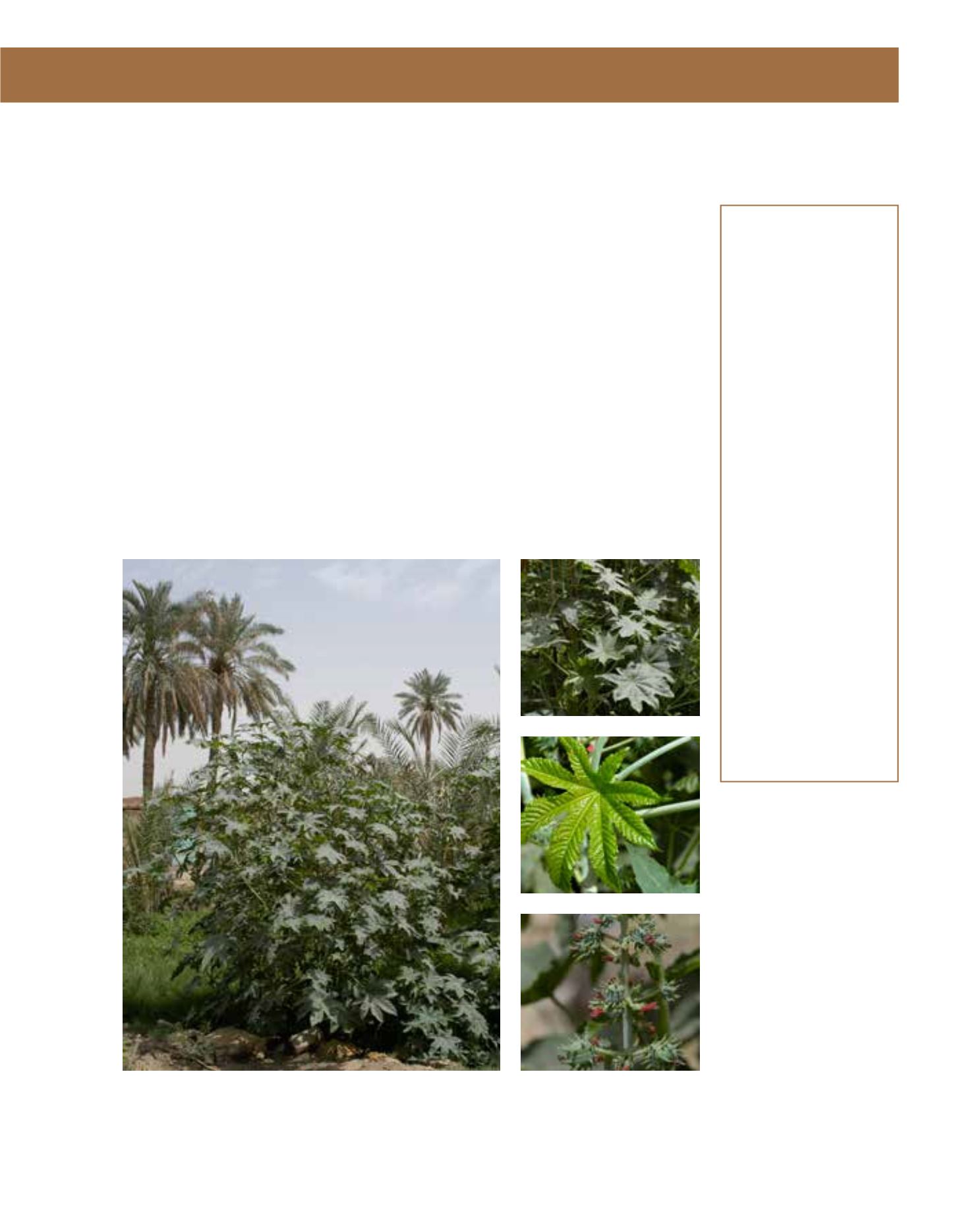

GENERAL
Origin
:
sub-tropical,
tropical
Vigour
:
fast growing
Humidity
:
very arid, semi-
arid, semi-humid,
very humid,
extremely humid
Propagation :
direct sowing,
sowing and
pricking out
Maintenance :
moderate
CONDITIONS
Urban climate :
resistant
Dessication :
resistant
Stagnant water :
vulnerable
Irrigation
:
low, medium
Salinity/ppm :
very high (6000
ppm)
Hardiness
:
0°C
SHAPE
Type
:
shrub, perennial,
annual
Height
:
2 m-4 m
Spread
:
1.5 m-4 m
Foliage
:
deciduous
FLOWER
Colour
:
red, brown, pink
Size
:
30 cm
Period
:
June - August
FRUIT
Type of fruit :
capsule
Fruit size
:
2 cm - 3 cm
Toxicity
:
highly poisonous
Ricinus communis has the common name of Castor Oil Plant: in Arabic, it is known as al khar-
wah. The area of distribution extends across Burma, northern Asia and northwest China. This
annual shrub-like plant prefers tropical to sub-tropical climates, and is not frost-tolerant. Ricinus
communis grows fast, and reaches a height of between 2 and 3 metres. It is often multi-stemmed.
The leaves are mainly green and sometimes appear as dark red; they are whorled, entire and pal-
mate. The flowers appear in summer in panicles with red-brown, hirsute globes. The plant is very
impressive in its appearance. The fruits are capsules that contain seeds which look like ticks. The
plant is named after its seeds. All parts of the plant are highly poisonous, especially the seeds. The
oil from the seeds is not poisonous, and was used as a remedy. The irrigation and nutrient requi-
rements are high. In Arriyadh, the plant can be found growing wild in the Wadi Hanifah close to
the water course. Because of its poison, it is often removed, although for some this is an attractive
ornamental plant; in Europe, it is used as a summer bedding plant. However, it must doubtless
be controlled because of its invasive character. Susceptible to insect attack, propagation methods
are direct seeding or sowing and pricking out. In landscape design, it can be recommended as
a background plant. This bee-attracting plant can be planted for foliage effects in public open
spaces and parks, bearing in mind that its seeds are poisonous. It also looks well in containers.
258
Ricinus communis,
Euphorbiaceae
Castor oil plant,
kharwah
















